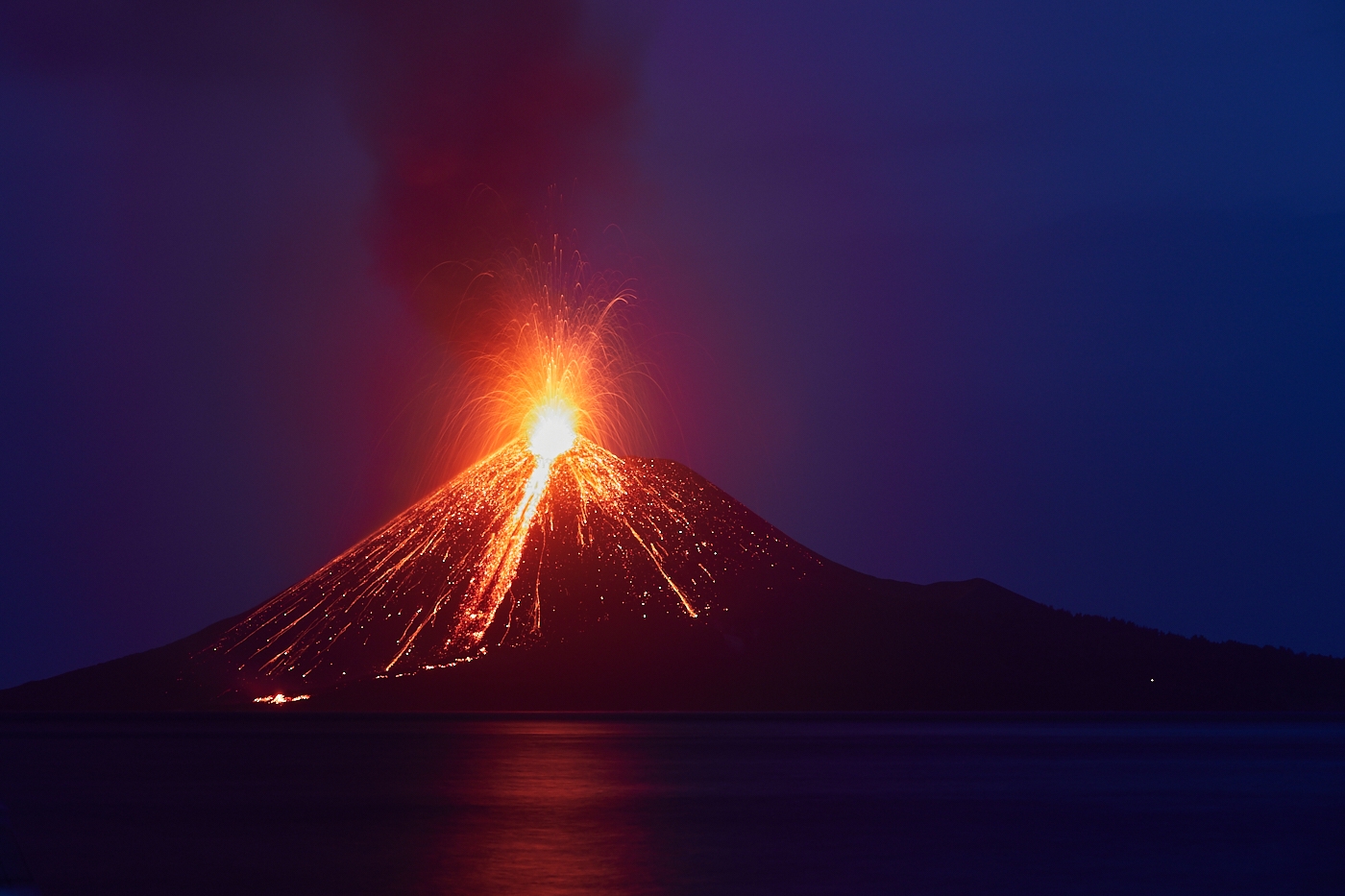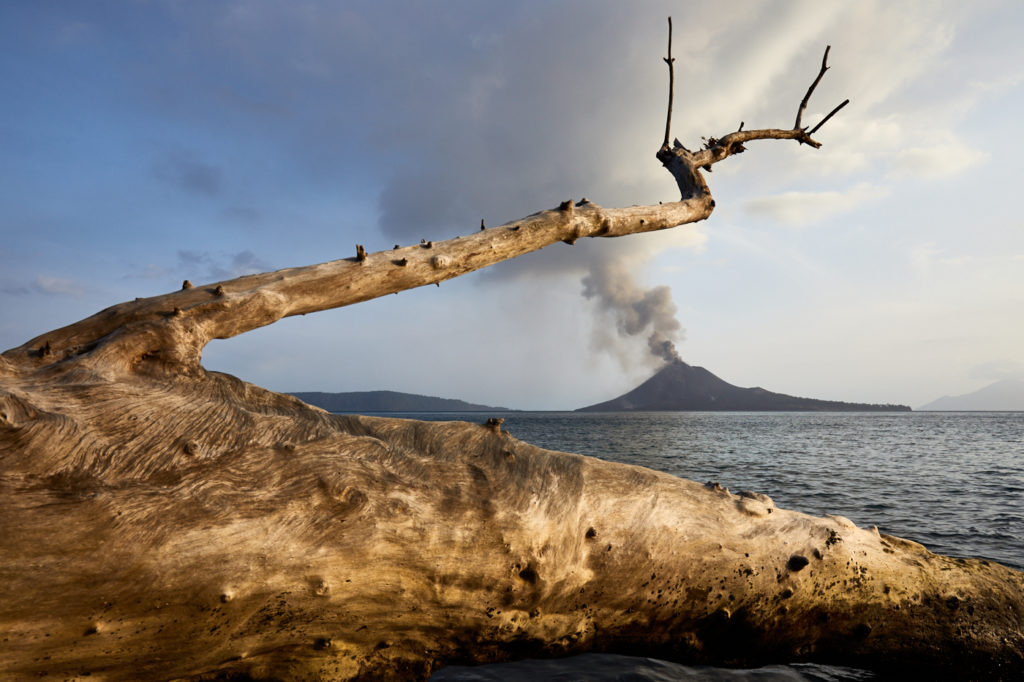Anak Krakatau: A giant slumbers

Anak Krakatau: A giant slumbers
The island of Krakatau stood in the Sunda Strait between Java and Sumatra it was approximately nine kilometres long by five wide. It hosted three volcanic vents, Perboewatan at the north end of the island, Danan in the middle and Rakata, the highest of the three which stood at around 820 metres, in the south.
Because of its distinctive cone, it had long been used as a visual marker by ships passing through the strait. But then, on the 27th of August 1883, it erupted unleashing a ferocious tsunami that killed 36,000 people and whose final ripples were recorded passing Cherbourg in France and just making it into The English Channel.
There were four explosions the last and largest of which occurred at 10.02 am and was heard 4,800 kilometres away on the little island of Rodrigues in the Indian Ocean. It threw tiny particles of volcanic dust high up into the stratosphere where, collected by the winds, it was blown all around the planet creating spectacular sunsets wherever it drifted.
No one knows which of the vents it was that exploded or if it was all three together but when it was over Krakatau was no more. The island had collapsed in on itself and all that was left were a few islets, which would also soon disappear, and the southern slope of Rakata.
In 1927 a new island emerged but was soon swallowed again by the sea. Then in 1930, after a few more false starts, the island rose from the sea and stayed. It was named Anak Krakatau or Child of Krakatau. By 1935 it had grown to 63 metres high and by 1955 it stood at 155 metres. At the time of these images, it was about 400 metres above sea level and growing at about 5 metres per year.
In August 2018, I spent the night on Rakata opposite the volcano. The north side of the island is mostly cliff. If its jungle cover were stripped away it would look as if it had been hewn through with a giant axe. At the base of this cliff is a fringe of soft black sand on which tiny ghost crabs scurry back and forth and which sparkles, as if sprinkled with microscopic diamonds, in the late afternoon sun. Dead trees, that have remained where they fell, are washed smooth by the tides and provide pleasant places to sit and watch the fishing boats pass by in the distance.
Throughout most of the day, the volcano had been very quiet producing little more than a plume of smoke and a low rumble every 10-15 minutes. Because of this, the crew had suggested we pitch our tents on Anak Krakatau itself and then climb part of the way up in the morning. But I had a photo op in mind and all I needed was a good sunset so I decided to stay put.


In the end, the sunset didn’t work out but the decision to stay on Rakata turned out to be remarkably prescient. As the sun went down Anak Krakatau woke up. The activity increased surprisingly rapidly into a very noisy Strombolian eruption and by nightfall I was treated to a firework display like no other.
The cycle began with what sounded like a sharp intake of breath followed by a roar of thunder which was accompanied by a confetti of burning rocks and lava from the crater. This repeated every few seconds and sounded pretty much how I would have imagined a snoring giant. Needless to say, neither myself nor any of the crew got a wink of sleep. Although the volcano was a good four kilometres away I could still feel the ground shake.
The eruption was still continuing when we left Rakata at around 9.00 the following morning. Landing on the island simply wasn’t an option anymore although we did sail as close as we dared. “One day the big one will come again,” remarked one of the crew as we pulled away. During the night the waters in the Sunda Strait had become quite choppy making the journey back in a twin-engined speed boat far scarier than the volcano had been.
*****
During a December 22, 2018 eruption, the crater collapsed reducing its height to a mere 110 metres and triggering a tsunami that killed 437 people and injured over 14,000 more. Since the eruption, the island has been busily reconstructing itself. The crater is once again above sea level and rising. Indeed, one day the big one will come again.